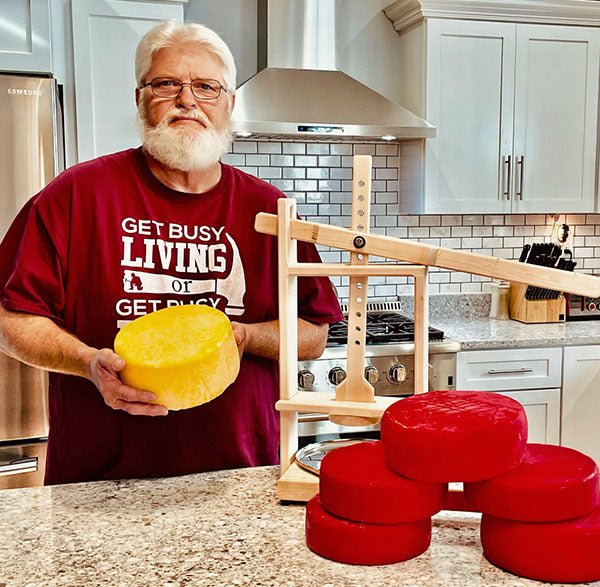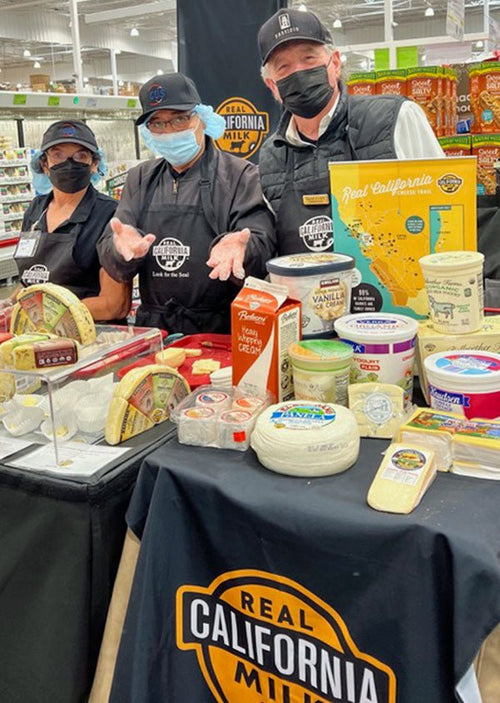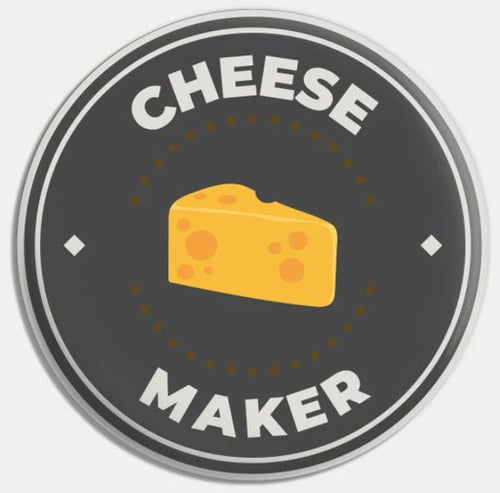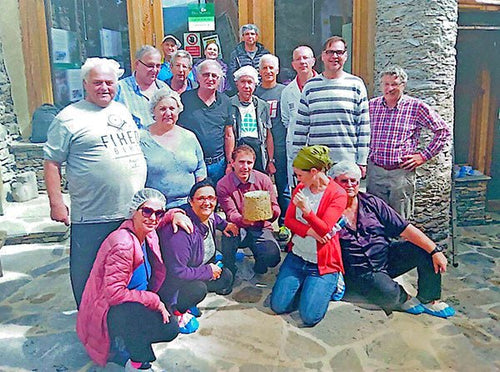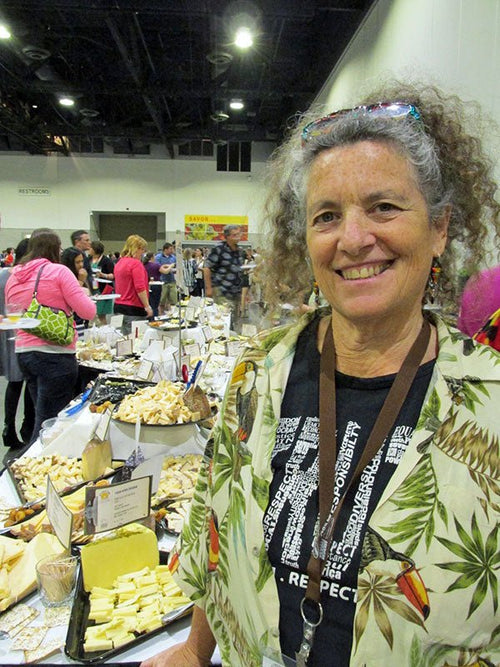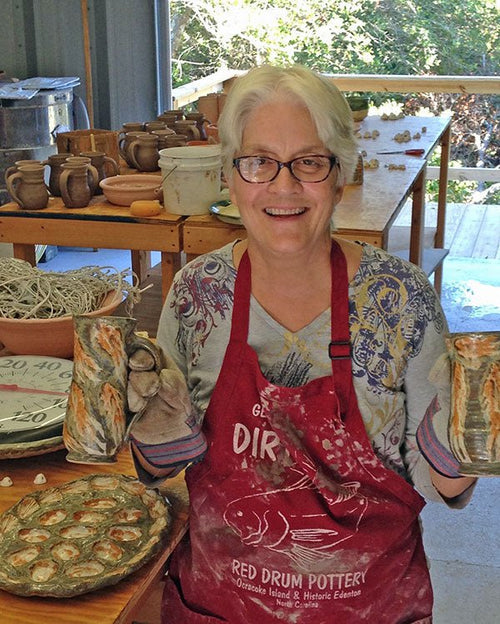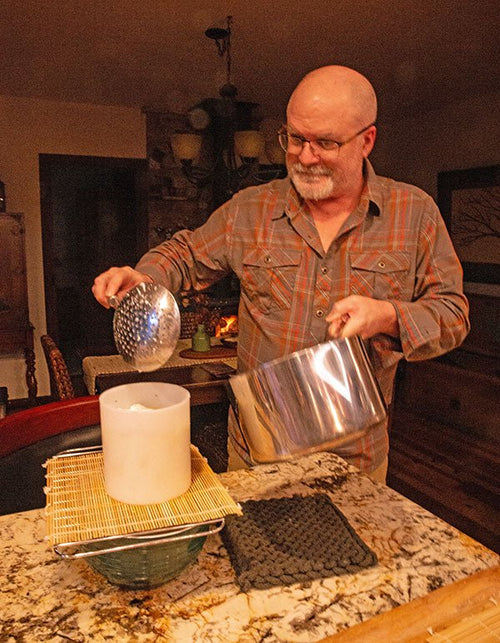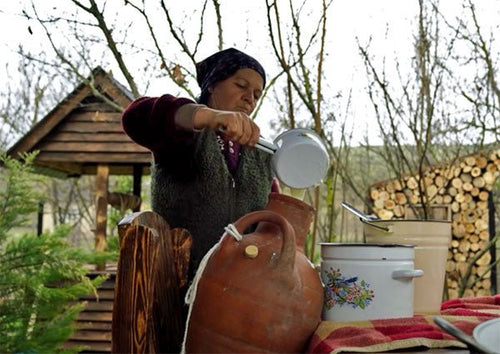Becky and her husband, Barton raise Wagyu cattle at their beautiful farm in the Catskills. Wagyu beef (that outrageously expensive beef you can find on the menus of very fine restaurants) is so delicious, it commands up to $200/pound in Japan(!) We can only imagine how wonderful it is for them to be able to eat it any time.
They sell their beef at the farm by appointment, and they typically sell out as soon as they are restocked. However, they are still building their business, so the number of animals harvested is increasing each year.
We were delighted to interview Becky, but our communications were primarily in the month of September, a sad time for her. When 9/11 happened, she was living in Stone Ridge with her then husband and their only daughter. He commuted to the city where he worked in the South Tower.
He was on the 40 floor stairwell of the South Tower when the tower fell. He ran for his life and managed to survive. He left his wallet behind on the windowsill with a picture of Becky and her daughter in it. Becky had another copy in her own wallet (below).
Now, Becky lives on a farm in a small town, far removed from the tragedy she remembers all too well. Fortunately, her daughter, now 29, has two living parents and her stepdad, Barton. (This is a second marriage for both Becky and Barton, so, they are a blended family with three adult children and three grandchildren on Barton’s side.)
Becky’s Story
I’m in Accord, NY. It’s a little town in Ulster county about 90 miles north of New York City.

Courtesy of Bestplaces.net
Our farm is just a gorgeous place, in the Rondout Valley. The Rondout Creek is a tributary to the Hudson River, so we are also a part of the Hudson Valley.
Our farm name is Hilltop Farm, and the view from the hill is spectacular. To the east is the Shawangunk Ridge (famous for rock climbers who call it the Gunks), and to the west is the entire Eastern Catskill Range, including High Point, and the Burroughs Range off in the distance.
My husband, Barton and I watch every sunrise and sunset from our house.
We think the delicious food we grow here reflects the beautiful place where it was grown.
Barton is a lifelong farmer.

Bart with Leo (standing up), a week old and Wei Xi, 12 hours old. These are Wagyu-cross calves, as we are breeding toward pure blooded Wagyu. These two are 75% Wagyu!
He purchased the land from his grandfather (also a dairy farmer) when he was 18 years old. He built our house when he was 20, and the barn when he was 24.
I got interested in cheese making because I’m married to a dairy farmer!
Bart was milking 45 Holsteins when the bottom started to fall out of the milk market in 2010, and he made the decision to sell his milking herd. It was very hard for him because he loved those cows. He was still doing well, business-wise, but he saw the writing on the wall. We continued to purchase replacement heifers to resell, but the market plunged for those as well, and we made the decision to stop that, too.
The good news in this story is that in that last batch of replacement heifers we purchased, there was one absolutely gorgeous little thing who literally pranced off the trailer. She stepped around puddles, and was always clean and shiny. We both looked at each other and said “Oooo – pretty!”
Her huge round eyes, coloring, and princess-like demeanor told us she is a Jersey-Holstein cross, and we dreamed of one day milking her and making cheese with the milk. We named her Brie after Barton’s favorite cheese.
In the meantime, we also looked for other ways to bring value-added products to the farm, because we both love raising and growing good food. We decided to diversify into beef, and we fell in love with the Wagyu breed.
Because Bart practices artificial insemination, the transition was relatively easy, although it has taken a very long time to grow our herd to a size where we are able to sell beef, which we are doing now, right off the farm.
We practice all-natural techniques with our cows, so we don’t use hormones to cycle them, and they do not consume antibiotics. We don’t feel the need to certify ourselves as organic, although we could, given our farming practices.
We want to remain small, and the word we honor in everything we do is “sustainable.” We love having this farm be a place where people can come to see how their food is raised, and taste true farm-fresh food.

Sugar snap peas, three kinds of lettuce, rainbow Swiss chard, and kale coming up during a late snow in May, 2020
We raise Wagyu for beef, and we also have dairy cows! (Wagyu as a breed are known to make VERY little milk, barely enough to raise a calf.)
Brie is one of three we are milking right now. They are all Holsteins except Brie, who is a Jersey-Holstein cross.
Brie and the others provide me with milk daily, and I practice making cheese with it, with the goal of being able to sell it.
The milk is grass-fed, and a deep, rich yellow in color. I drink so much of it, and it’s delicious.
Learning to make cheese:
When Barton and I first started dating, 15 years ago, we began making fresh mozzarella together for our suppers during tomato season and it was something I loved doing. I just wanted to make more and more … so I got started, took the Penn State short course “The Art and Science of Cheese,” and here I am – with our fridge packed full of cheese, and a huge bunch of raw milk cheddar aging!
I took the course in early winter of 2017. It was really fantastic – an intensive. It was one full week, and we started first thing in the mornings and ended in the evenings.

The next class will be November 7-10. (click here)
Now that I’ve been making more cheeses and feeling more adventurous and “experimental,” I almost wish I could take it again; but there are other teachers and courses so I will likely do something different in the future (your workshops, for sure).
There were people there from all over the country, and also from some other countries, and we were all at different levels of knowledge and skill. There were even 4 milk inspectors from Virginia, who I spent some time speaking with … it was a great experience for me. It was expensive, but I had saved and planned for it.
My cheese:
The cheeses I’ve made have been simple, but my goal is to do these cheeses really, really well.
I’ve made mozzarella using several methods – the 30-minute recipe from New England Cheesemaking Supply’s website (cheesemaking.com), which is so fun, and really great in a pinch when we decide we want pizza or to serve with tomatoes from the garden; and also a cultured mozzarella which takes longer to make, and which has tremendous flavor, and is firmer than fresh mozzarella.

Cultured mozzarella. I keep it in the freezer to use when the weather gets cold and the cows are making less milk.
I feel confident in my feta now, and I’ve learned how to change things as needed, if something doesn’t look quite right. It’s so satisfying to break open a block of feta I’ve made, and see that it is both crumbly and creamy, and just the right texture. Even more satisfying is consuming it!
I’ve had family and friends tell me that I could just stick to selling feta because it’s so good! I like to give credit to Barton, and to Brie and the other ladies providing milk because really, it’s the quality of the milk I’m using, which is so fresh and delicious.
I’ve made cheese curds, which never last too long, and the goal is that we will sell cheese curds right off the farm once our creamery is completed.

Curds cooking
There have been many late nights when Barton falls asleep on the sofa while I’m making cheese, and those are some of my favorite times – the peace and zen-like time of making cheese feels like meditation to me.
I love watching the curds cooking. I continuously taste them, and I love when the little squeaks start happening, and how the flavors develop with each batch, depending on the grasses the cows are eating.
We have a small Milk Plan bulk tank, and we are saving for a pasteurizing cheese vat.
Right now, I have about 35 pounds of raw milk cheddar aging. My aging process is not the greatest, and I won’t go into it too much because it is highly unprofessional (okay, it’s in tubs in our fridge) but, so far, I’ve made some decent cheddars for our own consumption.
I love opening them to see what they look like. I will never forget the first cheddar I ever cut into, because I was so nervous, but it was like Christmas! Once I cut it, and realized that everything I’d done to that point had worked, I started jumping around the kitchen! Then we tasted it, and I started jumping around again!
Barton thought I was crazy, but it was such a great feeling. I’ve played around with several different cultures as I’ve become more courageous and as I’ve understood more how everything is working in my kettle.
I use different cultures to see how the flavor profiles change when following the exact same process/recipe. I’ve been experimenting with a great culture, RA-21, which makes a delicious tangy flavor we both love, and it’s fun to change up the flavor profiles.
I vary other parts of the process, too, in order to see if I can create something unique. As I’m learning, that is my favorite part – knowing I can change the flavors and textures depending on what we feel like eating.
A family affair:
Our families have been such good (extremely happy) taste testers! Bart’s older brother, in particular, has been a great consumer of my experiments, although he has liked everything he’s tried, so maybe he’s not the best when it comes to a discerning palate!
Bart’s granddaughters were here for a week this summer, and I made mozzarella with the oldest one, and she proudly served her parents delicious pizza made with her cheese. She’s exhibiting her chickens in her local county fair, and she’s already planning to make cheese next year for a 4-H project, and find a category to exhibit it in next year’s fair.
I promised to teach her 4-H group how to make mozzarella, and I’m looking forward to being able to work with kids doing that. There’s something about cheese making that boosts self-confidence, even at my age, and it’s such a great activity for kids from that perspective.
My goals:
Our goals are to be selling raw milk legally in New York, right off the farm, by early next spring when our cows freshen. We are very close to having our infrastructure in place, and it’s exciting to see it all coming together.
Once we are selling milk, we will start the licensing process for cheese. Our goal for that next step is our cheese vat, which will be a pasteurizing vat. My cheesemaking has been done entirely on our kitchen stove, using a big 4-gallon double boiler. I sometimes make two batches a day, because I want the practice, and I’m using this time to really understand what’s happening with the milk in that pot.
My most heartfelt goal is to create a cheese for which I already have a name … my husband’s best friend passed away a few years ago, very suddenly. He was a dairy farmer, and would have loved what we are doing here, so I’ve already thought of a cheese name in his honor. I just have to create the cheese to go with it!
Catskill Wagyu at Hilltop Farm
(845) 687-0947
brookshilltopfarm@gmail.com
Facebook: https://www.facebook.com/HilltopFarm.CatskillWagyu/
Instagram: @catskillwagyu




































































